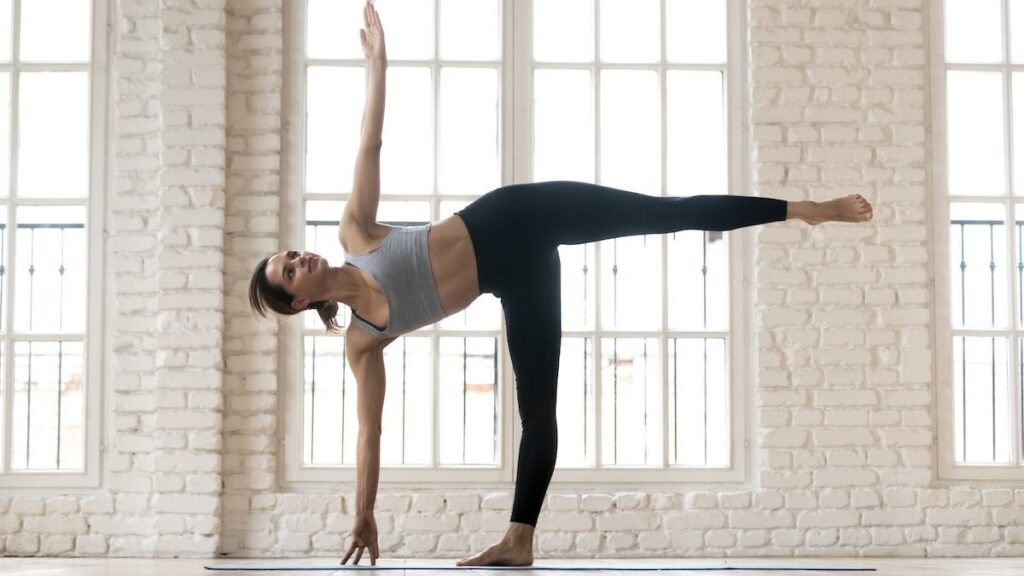If you’re ready to tackle difficult yoga poses for beginners, this guide is your perfect starting point. Yoga offers countless benefits, including flexibility, strength boosting, and mental focus. However, some poses can feel intimidating at first. With practice, patience, and proper guidance, even challenging poses can become manageable.
Let’s explore these poses and how to approach them with confidence and ease.
1. Downward Facing Dog
One of the first poses every yoga practitioner encounters, Downward Facing Dog is a cornerstone of any yoga practice. Though it looks simple, beginners often struggle with maintaining proper alignment.

To make it easier, distribute your weight evenly between your hands and feet. Push your hips upward, keeping your spine long and shoulders relaxed. Focusing on proper alignment and breath not only enhances this pose but also prevents strain on your wrists and shoulders.
2. High Plank: Building Core Strength
High Plank is much more than holding a push-up position—it’s a full-body workout disguised as a yoga pose. Many beginners find it tough to maintain the correct form without letting their hips sag or their shoulders tense up.

The key lies in engaging your core muscles and pressing firmly through your hands and toes. It’s an excellent way to prepare for more advanced yoga postures like arm balance poses while building stability and endurance.
3. Warrior III: Finding Balance
Warrior III is a powerful pose that tests your balance, strength, and concentration. Begin by standing tall, shifting your weight onto one leg, and extending your other leg and arms forward to create a straight line.

If you find it difficult to stay steady, use a wall or chair for support. This pose is excellent for improving balance exercises, strengthening your legs and back, and increasing overall body awareness.
4. Crow Pose
If you’re looking to add a fun challenge to your practice, Crow Pose is perfect. It’s a beginner-friendly arm balance pose that requires you to balance your body weight on your hands while lifting your feet off the floor.

Start by squatting with your knees wide apart, placing your hands firmly on the mat, and slowly shifting your weight forward. Mastering this pose improves your wrist strength and teaches you the importance of focus and breath control.
5. Half Moon Pose
The Half Moon Pose is as elegant as it is challenging. Balancing on one leg while extending the other behind you—and reaching one arm toward the ceiling—requires flexibility, strength, and concentration. Beginners can use a yoga block to support their lower hand and gradually build balance.

This pose not only stretches your hamstrings and hips but also strengthens your core and improves your overall posture. Incorporating it regularly will improve your yoga practice quickly.
6. Boat Pose: Core Strength for Stability
Few poses are as effective as Boat Pose when it comes to building a strong, stable core. Begin this pose by sitting with your legs extended. Then, lean back slightly while lifting your feet off the ground to create a V-shape with your body.

Go ahead and stretch your arms forward, keeping your back straight and shoulders relaxed. Though it might feel tough initially, this pose strengthens your abs and improves stability, making it a must-have in any beginner’s routine.
7. Revolved Triangle Pose
The Revolved Triangle Pose combines balance, flexibility, and a deep twist. Start with your feet wide apart and your front foot facing forward. Extend one hand toward the floor while twisting your torso and reaching your other arm upward.

This pose can feel especially difficult for beginners, so don’t hesitate to use a block for support. It’s a fantastic way to improve spinal flexibility and open up tight shoulders and hips.
8. Camel Pose
The Camel Pose is a deep backbend that stretches the chest, abdomen, and thighs. Kneel on your mat, press your hips forward, and reach back to touch your heels.

Beginners often find this pose challenging due to tightness in the front body. However, it’s important to focus on proper alignment and breath and avoid pushing yourself too far too soon. Over time, this pose enhances your flexibility and promotes an open, relaxed posture.
Final Thoughts
Yoga is more than just a physical practice—it’s a personal journey of growth and mindfulness. While these difficult yoga poses for beginners may test your limits, they also open the door to greater self-awareness and resilience. Remember, every small step matters. Whether you’re working on flexibility training or mastering balance exercises, enjoy the process and celebrate your progress. With time, these poses and fitness tips will become second nature.
